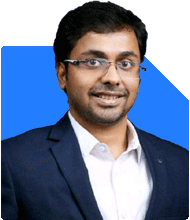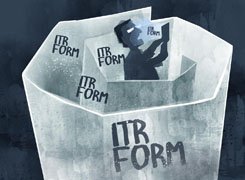Samkit Maniar |180 Answers |Ask -Follow
Tax Expert - Answered on May 27, 2024
He has graduated from Mumbai’s N M College of Commerce and Economics and has completed his CA from The Institute of Chartered Accountants of India."... more

Sir, my NRI daughter has taxable LTCG in FY 23-24 and no other income. I understand that she has to file ITR in Form 2. I also understand the Form 2 has already been notified. My question is whether she can file IT return now itself or after 31st March or does she have to wait for any other announcement?
Please take your CAs advice before moving ahead.
You may like to see similar questions and answers below
Mihir Tanna |1052 Answers |Ask -Follow
Tax Expert - Answered on Apr 14, 2023
Mihir Tanna |1052 Answers |Ask -Follow
Tax Expert - Answered on May 05, 2025
Radheshyam Zanwar |1601 Answers |Ask -Follow
MHT-CET, IIT-JEE, NEET-UG Expert - Answered on May 06, 2025
Dr Nagarajan J S K |372 Answers |Ask -Follow
NEET, Medical, Pharmacy Careers - Answered on May 06, 2025
Dr Nagarajan J S K |372 Answers |Ask -Follow
NEET, Medical, Pharmacy Careers - Answered on May 06, 2025
Dr Nagarajan J S K |372 Answers |Ask -Follow
NEET, Medical, Pharmacy Careers - Answered on May 06, 2025

Good decision! Offline coaching is far better than online coaching because it allows you to focus on your studies more effectively.
You mentioned that you need to crack the exam, so here are some tips on how to do that:
First, identify which subjects and chapters you find challenging and make a list. Discuss these areas with your coaching faculty. Aim to ask at least 10 questions daily to clarify your doubts and enhance your understanding.
Alternatively, you can prepare 10 questions on your own and seek answers from your coaching faculty. If you maintain this practice throughout the course, you will build your confidence.
Additionally, if you are not practicing yoga and meditation, I recommend starting. These activities can help you concentrate better and reduce distractions while studying.
Best of luck!
POOCHO. LIFE CHANGE KARO.
BEST WISHES.
POOCHO. LIFE CHANGE KARO.
Samraat Jadhav |2270 Answers |Ask -Follow
Stock Market Expert - Answered on May 06, 2025
Dr Nagarajan J S K |372 Answers |Ask -Follow
NEET, Medical, Pharmacy Careers - Answered on May 06, 2025
Ravi Mittal |581 Answers |Ask -Follow
Dating, Relationships Expert - Answered on May 06, 2025
Radheshyam Zanwar |1601 Answers |Ask -Follow
MHT-CET, IIT-JEE, NEET-UG Expert - Answered on May 06, 2025
Dr Nagarajan J S K |372 Answers |Ask -Follow
NEET, Medical, Pharmacy Careers - Answered on May 05, 2025
Prof Suvasish Mukhopadhyay |615 Answers |Ask -Follow
Career Counsellor - Answered on May 05, 2025





















